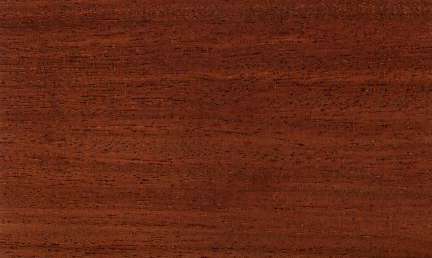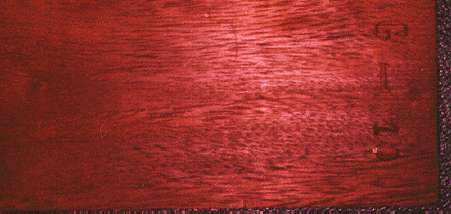 
Guele (Prosopis africana)
Family: Leguminosae
Common names: Abusurung, Akaka, Akiye, Akwiye, Buse-segne, Dwadata, Guele, Her, Ir, Ironwood, Kaki, Kiriya, Kirya, Kohi, Kokara, Kpanena, Kpaye, Kyembo, Langbina, Langbung, Langjina, Nanzili, Nazari, Pangi, Pato, Pau carvao, Prekese, Pung-un-nung, Sanchi lati, Sanga, Ubwa, Yan, Yoruba charcoal wood, Zamturi, Zingili
Distributed in: Cameroon, Central African Republic, Gambia, Ghana, Guinea, Ivory Coast, Nigeria, Senegal, Sierra Leone, Sudan, Togo, Uganda, Zaire (Africa)
Distribution overview: The genus Prosopis consists of about 40 species with a growth range in the tropical regions of America and Asia. It is represented by only one species, P. africana in tropical Africa. reported to grow in the savannah regions from West to East Africa, and is found from Senegal to Sudan and Uganda.
Common uses: Agricultural implements, Barge fenders, Bedroom suites, Boat building (general), Boat building: framing, Cabinetmaking, Charcoal, Cooperages, Crossties, Docks, Dockwork, Drawer sides, Excelsior, Flooring, Flooring: commercial heavy traffic, Food containers, Fuelwood, Furniture , Handles: woodworking tools, Harbor work, Heavy construction, Joinery, Kitchen cabinets, Living-room suites, Marine construction, Mine timbers, Musical instruments, Naval architecture, Office furniture, Posts, Precision instruments, Radio - stereo - TV cabinets, Raft floats, Rafts, Railroad ties, Shipbuilding, Sporting Goods, Tables, Tool handles, Turnery, Vats, Vehicle parts, Wharf construction, Wheel spokes, Wheels
Environment profile: Status unknown in many of its growth areas
Tree size: Trunk diameter is 150-200 cm
Colors: the heart isReddish dark brown , Yellow to golden-yellow to orangeand the sapwoodWhitish brown , Yellow.The grain isWavy, the textureMedium
Natural durability: Very durable, Very good weathering properties
Odor: Fragrant odor
Silica Content: Slight
Drying Defects: Slight surface checking
Ease of Drying: Fiber saturation point is very high
Tree Identification: Bole/stem form is misshapen
Comments: General finishing qualities are rated as good
Blunting Effect: Medium effect
Boring: Generally good
Cutting Resistance: Difficult to saw
Gluing: Good gluing properties
Mortising: Easy to mortise
Moulding: There is a moderate blunting effect
Movement in Service: There is a moderate blunting effect
Nailing: Possible if prebored, Very Good to Excellent
Planing: Very Good to Excellent
Resistance to Impregnation: Highly resistant
Response to hand tools: Easy to machine
Routing recessing: Medium blunting effect on cuttin tools
Screwing: Fairly Easy to Very Easy, Very Good to Excellent Results; Turning: Fairly Easy to Very Easy
Polishing: Satisfactory;
- Numerical data Metric
- Numerical data English
- Strength properties
- References
 |
 |
 |
 |
| Item |
Green |
Dry |
Metric |
| Specific Gravity |
|
|
|
| Density |
|
849 |
kg/m3 |
| Bending Strength |
859 |
1331 |
kg/cm2 |
| Crushing Strength |
433 |
673 |
kg/cm2 |
| Hardness |
|
1333 |
kg |
| Impact Strength |
|
|
cm |
| Shearing Strength |
|
150 |
kg/cm2 |
| Stiffness |
124 |
141 |
1000 kg/cm2 |
| Tangential Shrinkage |
|
|
% |
| Radial Shrinkage |
5 |
|
% |
| Weight |
833 |
785 |
kg/m3 |
| Maximum Load |
|
|
cm-kg/cm3 |
| Toughness |
|
|
cm-kg |
| Static Bending |
|
|
kg/cm2 |
|
 |  |  |  | | Item | Green | Dry | English | | Bending Strength | 12226 | 18942 | psi | | Density | | 53 | lbs/ft3 | | Hardness | | 2940 | lbs | | Maximum Crushing Strength | 6170 | 9574 | psi | | Shearing Strength | | 2136 | psi | | Stiffness | 1764 | 2019 | 1000 psi | | Weight | 52 | 49 | lbs/ft3 | | Radial Shrinkage | 5 | | % | | Tangential Shrinkage | 8 | | % | |
Density (dry weight) = 61-67 lbs/cu. ft.
Density (dry weight) = 67-75 lbs/cu. ft.
Density (dry weight) = 53-60 lbs/cu. ft.
Shrinkage, Tangential = large
Shrinkage, Radial = large
Max. crushing strength = high
Bending strength (MOR) = high
Shrinkage, Volumetric = fairly large
Shrinkage, Tangential = very small
Shrinkage, Radial = very small
Shrinkage, Radial = fairly large
Hardness (side grain) = very hard
Compression strength (parallel to grain) = very high
Bending strength (MOR) = very high
Bolza, E., Keating, W.G.,1972,African Timbers - the Properties, Uses and Characteristics of 700 Species,C.S.I.R.O. Div. of Building ResearchEggeling, W.J.,1940,Indigenous Trees of Uganda,Govt. Printer Entebbe UgandaGottwald, H., Noack, D.,1966,Anatomische und Physik-Technol. Untersuchungen an Holzarten de Sudan,Mitt. Bundforschanst.Forst-u Holzw,Vol.64Gotz, E.,1983,Timber trees of the Gambia,Stiftung Walderhaltung in Afrika and Bundesforschungsanstalt fur Forst-,und HolzwirtschaftIrvine, F.R.,1961,Woody Plants of Ghana,O.U.P. LondonKeay, R.W.J.1989. Trees of Nigeria.Revised Version of Nigerian Trees. Clarendon Press, Oxford.Keay, R.W.J.,1964,Nigerian Trees Vol.2,Nigeria Federal Department of Forest Research, IbadanKennedy, J.D.,1936,Forest Flora of Southern Nigeria,Government Printer LagosSallenave, P.,1955,Proprietes Phyiques et Mecaniques des Bois Tropicaux de l'Union Francaise,C.T.F.TSavill, P.S., Fox, J.E.D.,1967,Trees of Sierra LeoneTakahashi, A.,1978,Compilation of Data on the Mechanical Properties of Foreign Woods (Part,III) Africa,Shimane University, Japan, Research Report on Foreign Wood No. 7Unwin, A.H.,1920,West African Forests and Forestry,T. Fisher Unwin Ltd. London
|









